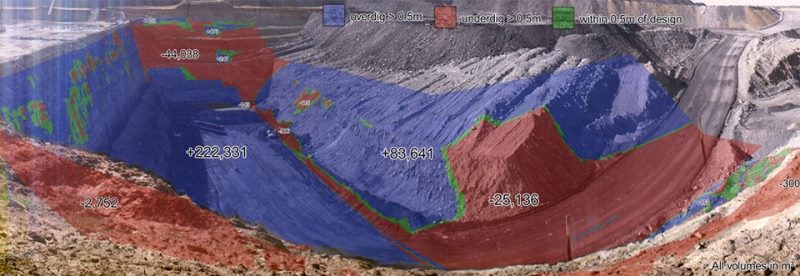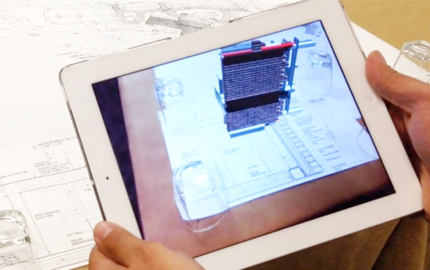New app allows fusion of BIM models
Augmented reality (AR) applications have really popped up across the business landscape in recent months. From Audi’s AR car manual to Ikea’s product catalog, the use of AR to boost a user’s experience is largely based in advertising but it makes you wonder what other applications are ripe for the technology.
How about an augmented reality app for visualizing construction job sites? It’s called SmartReality, and the developer JB Knowledge Technologies, www.jbknowledge.com, says the iOS app is the combination of AR and construction technology.
The app will allow for the fusion of BIM models and paper plans to boost collaboration both in the field and in the office.
Here’s how it works: users focus on a given design or plan file with the camera on their iPad, iPad Mini, or iPhone, the app then recognizes the design, and the screen overlays a virtual model of what the structure will look like upon completion.
James Benham, president of JB Knowledge, said “the future is limitless. There’s a lot of exciting applications that can take this to the next level.”
But it’s not out yet. The company said those interested can visit the SmartReality website and be placed on a notification list for when the demo app is available.
Just recently, 3D imaging firm Maptek Pty Ltd. debuted a new AR app for the mining industry, allowing operators to use handheld devices to compare laser scanned surface data during excavation against 3D mine plan designs for conformance in the field.
The firm’s PerfectDig software streamlines communication between surveyors, mining engineers and equipment operators, so excavation adjustments can be made for efficient removal of overburden, the soil and other material on top of the bedrock, and optimal mineral recovery.
So how does it work? A Maptek I-Site laser scanner captures surface data while mining continues. PerfectDig automatically registers the scan data against the 3D design of mine plans imported from Maptek’s Vulcan mining software for comparison.

Users can then access the 3D visual and spatial analysis comparison in less than 10 minutes on a smartphone, tablet or laptop. Different overlays can be selected for display – including layers, depths, overdig or underdig with volumes and measurements – allowing operators to view detailed sections, photos, volumes, and other data.
Operators, using specified tolerances, can then assess the degree of conformance to the 3D design plan and adjust the excavation and update the design, according to Maptek. Overlays detailing conformance to design plan parameters are then made available via secure online server to off-site production operators, pit designers, and managers.
Size of AR tech market
A recent market research report from MarketsandMarkets puts the annual growth rate of AR at more than 15 percent, estimating the commercial value of the technology to reach $1.06 billion in 2018.
Meanwhile, app developers will invest over $2.5 billion in AR applications in 2018 as it becomes part of people’s everyday mobile experiences, especially in the retail and marketing domains, according to a recent market forecast from ABI Research.
ABI said developers will invest $670 million this year on AR apps and laid out four key drivers that will define the AR market in the next few years:
- the mixing of cloud computing and AR
- the move toward more marker-less, vision-based AR
- the Internet of Everything and so-called sensor fusion
- advances in smart eyewear products
The most imminent growth driver for AR is cloud computing. Other prominent issues impacting the market’s growth trajectory are data visualization and information overload.
“The cloud is a natural fit for AR developers, considering how big benefits cloud-based content libraries present for image recognition technologies,” said Aapo Markkanen, ABI senior analyst.
Most of the investment is expected to come from companies looking to use AR to boost their marketing programs, including mobile ad efforts, says ABI analyst Aapo Markkanen.
ABI said AR will become a significant enabler for the “Internet of Everything,” specifically big-data analytic, an area where AR and data visualizations will have a close connection to the emergent wearable computing products.
“In a world where a countless number of physical objects and structures will be connected by sensors, AR can serve as a visualization medium that will make the sensor data situational, bridged to the real-world surroundings,” Dan Shey, ABI practice director, predicts. “The consumer aspect is unsurprisingly making most of the headlines here, but we’d expect smart eyewear to initially make more waves in transforming the enterprise. Google Glass, like the smart-glass pioneer Vuzix, will find various use cases in verticals such as engineering, logistics, and healthcare.”






